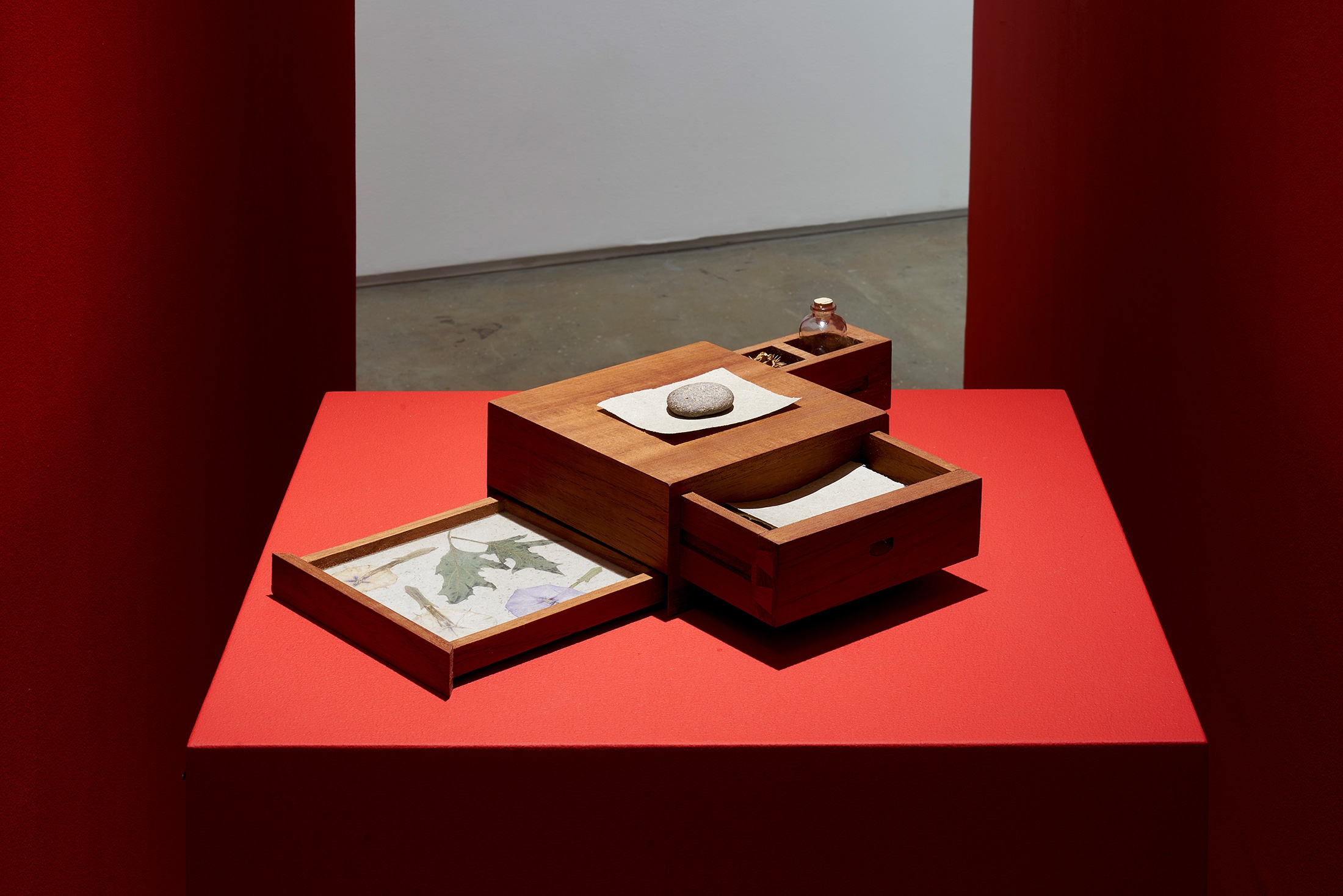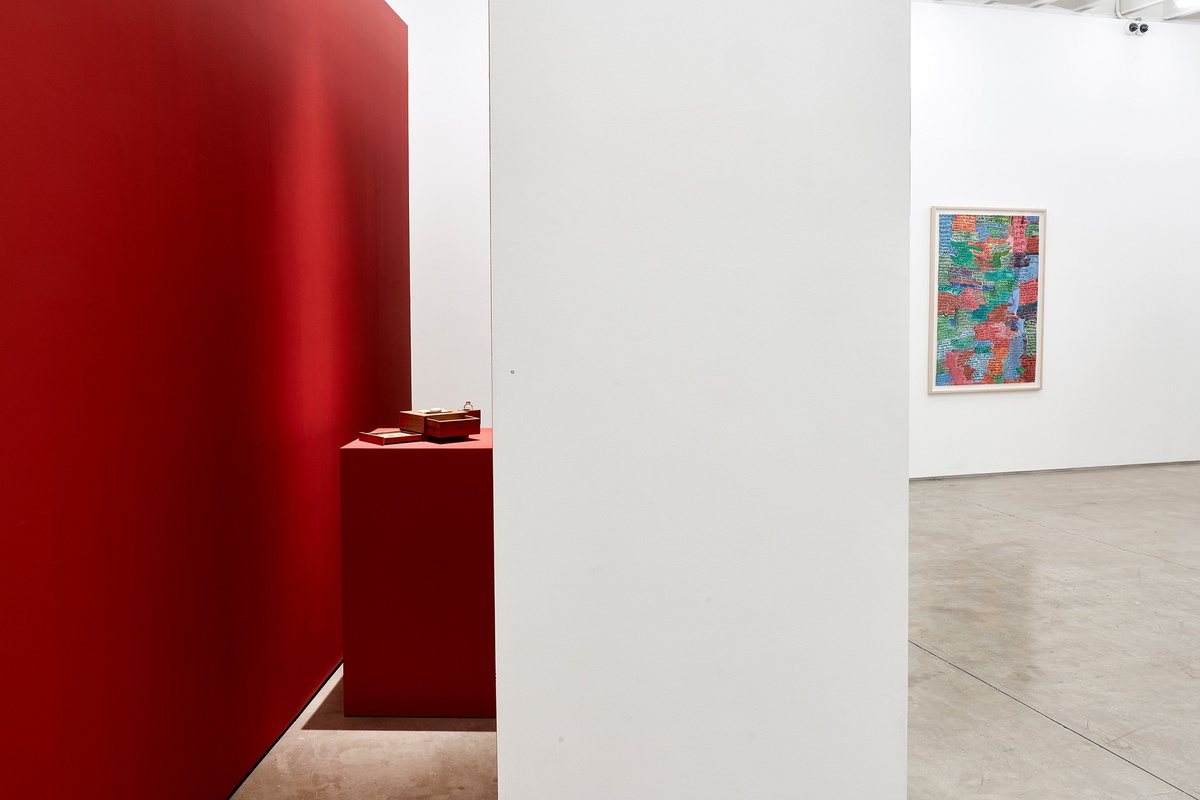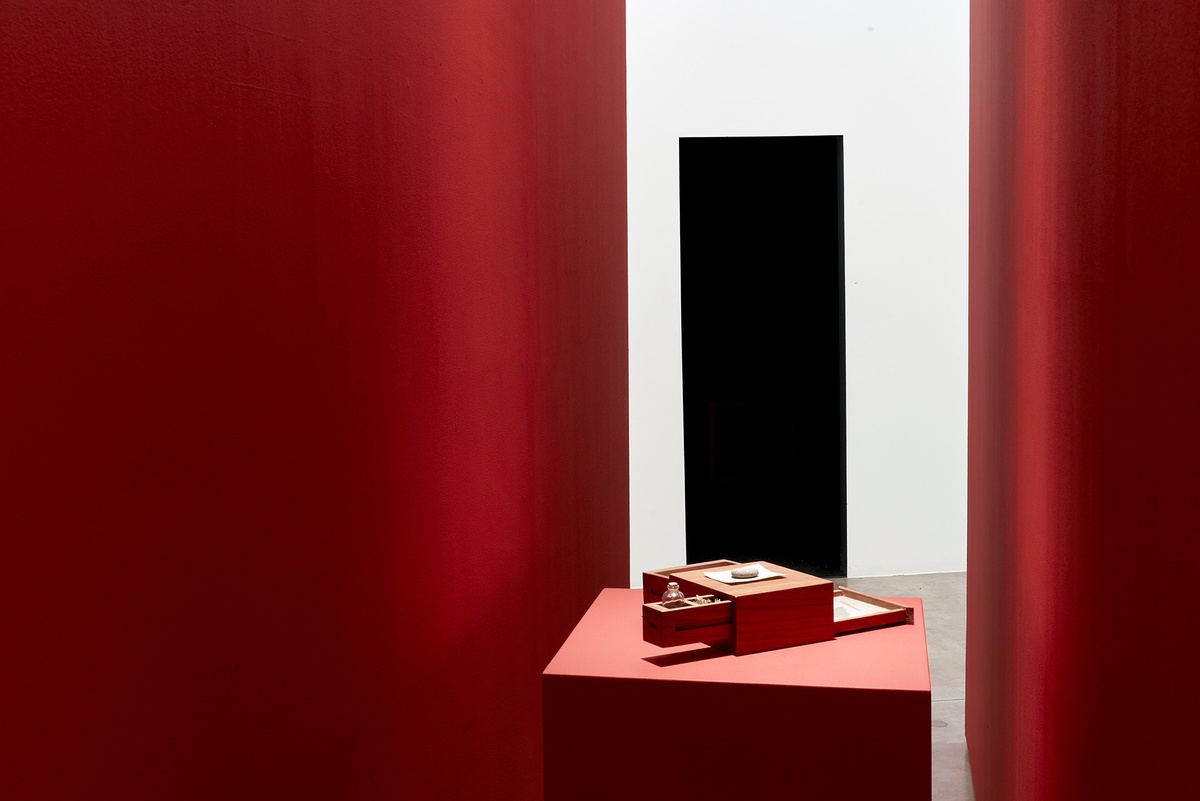Miguel Cinta Robles

Intended for the composition of love letters, Robles’ moveable writing bureau extends reflections on the folklore surrounding a single plant: Datura stramonium in Latin, Toloache in Spanish, Jimsonweed in English. The plant is present in all its parts and expressions: seed pod, flower, leafing stem, root – its respective phases held in discrete cedarwood drawers. To the artist, the bureau is a vessel of “essences and energies” with which to guide the writing of letters. Included in the drawers are sheets of paper made from pulped Toloache and pressed flowers – picked on a full moon when their scent is most pungent – a bottle with water from a river infused with roots and seeds, and preserved specimens of a pod. Made in conversation with Indigenous healers, the work was formed, the artist suggests, by intuition, divination, and magic. Western scientific formulations, disregarding myth and mystery, classify the plant as simply toxic. As the artist writes:
Toloache could help us reshape and challenge our perceptions regarding the historical mistreatment and persecution of women and indigenous groups for their practice and preservation of profound knowledge and connections with sacred plants. Throughout history, Western thought has stigmatised, persecuted, and punished these relationships through witch hunts, genocides, scientific control, and suppression. The taxonomic classification of these plants has reduced their wisdom to mere commodities within the pharmaceutical industry or relegated them to myths or ethnographic tales.
b.1997, Oaxaca
Miguel Cinta Robles’ projects are wide-ranging and more often collaborative, nodes around which communities take form; from Terreno Familiar, an experimental food garden and educational project on his family’s farm, to Margarita, a research space in Oaxaca de Juárez focused on the intersection of art technologies and ecology. His practice asks after alternative strategies to engage the natural world, integrating the fields of agriculture, ecology and art-making to explore political and social issues around land, food sovereignty, and access to nature. Pursuing novel taxonomies, Robles considers associative and affective ways with which to approach and produce eco-agricultural knowledge. Walking workshops in the mountainsides, practical classes in permaculture, and gatherings centred on syntropic theory – all these form part of a complex, hybrid practice. Complementing and extending his agri-activism, Robles’ sculptures are more often composed of plant matter and natural material from the region, chosen for their medicinal and mythic resonances.

